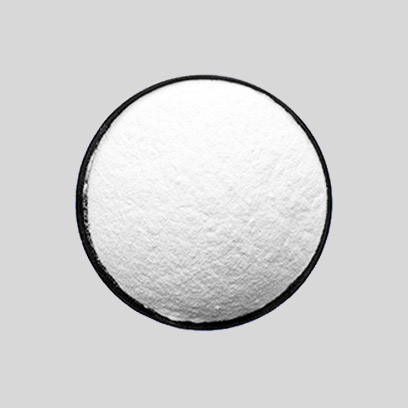
May . 31, 2025 18:30 Back to list
Industrial-Grade Titanium Oxide (TiO2) - Rutile/Anatase R996, B101, R5566 Free Samples
- The Versatility of Titanium Dioxide in Industrial Applications
- Technical Superiority: Why Titanium Dioxide Stands Out
- Leading Titanium Dioxide Grades: A Manufacturer Comparison
- Tailored Solutions: Customizing Titanium Dioxide for Your Needs
- Real-World Applications: Titanium Dioxide in Action
- Quality Assurance and Environmental Compliance
- The Future of Industrial Coatings with Titanium Dioxide

(titanium oxide)
The Versatility of Titanium Dioxide in Industrial Applications
Titanium dioxide (TiO₂) remains the cornerstone pigment for industries demanding uncompromising opacity and brightness. This industrial grade oxide white powder exists in two primary crystalline formations - rutile and anatase - each delivering distinct performance benefits. As the globally preferred white pigment, titanium oxide
dominates markets from architectural paints to advanced polymers due to its exceptional light-scattering properties. Approximately 75% of all white pigments consumed worldwide rely on TiO₂'s refractive index of 2.76, significantly outperforming alternatives like zinc oxide or lithopone.
Technical Superiority: Why Titanium Dioxide Stands Out
Rutile titanium dioxide grades like R996 and B101 exhibit superior durability and weathering resistance compared to anatase variants, making them ideal for exterior applications. Key technical advantages include:
- Opacity performance exceeding competitors by 30-40% in standardized tint tests
- UV absorption capacity blocking 99% of UVB and 70% of UVA radiation
- Thermal stability maintaining integrity at temperatures up to 1,800°F
- Photocatalytic activity optimized through specialized surface treatments
These properties stem from TiO₂'s electron configuration, enabling rutile TiO₂ powder to provide both protective functionality and exceptional brightness simultaneously.
Leading Titanium Dioxide Grades: A Manufacturer Comparison
| Grade | Type | Oil Absorption (g/100g) | Specific Gravity | TiO₂ Content (%) | Primary Applications |
|---|---|---|---|---|---|
| R996 | Rutile | 18.5 | 4.1 | 97.5 | Architectural coatings, Plastics |
| R5566 | Rutile | 20.2 | 4.0 | 95.8 | Automotive finishes |
| R902 | Rutile | 16.3 | 4.2 | 98.2 | High-gloss industrial coatings |
| R6618 | Rutile | 22.1 | 3.9 | 95.1 | Paper laminates |
| R6628 | Chloride Process | 17.8 | 4.1 | 97.9 | Marine coatings |
Tailored Solutions: Customizing Titanium Dioxide for Your Needs
Modern TiO₂ formulations address specific processing challenges through particle engineering. Surface-modified variants with inorganic treatments deliver:
- Improved dispersibility reducing milling time by up to 50%
- Acid-resistant coatings for pH-sensitive systems
- Low VOC formulations meeting environmental regulations
- Enhanced compatibility with organic matrices
For manufacturers requiring unique specifications, TiO₂ powder can be engineered with particle size distributions between 0.2-0.4 microns, precisely balancing opacity and light scattering efficiency.
Real-World Applications: Titanium Dioxide in Action
Industrial-grade titanium oxide demonstrates measurable performance across sectors:
- Paints & Coatings: Rutile TiO₂ increases coverage rates by 40% versus standard pigments in protective industrial finishes
- Plastics: R5566 formulation achieves 92% UV blockage in outdoor vinyl applications
- Paper Specialty anatase grades provide 20% brighter whites with lower loading levels
- Cosmetics: Micronized titanium dioxide offers SPF 50+ protection without whitening effect
A recent automotive case study confirmed coating systems using Lomon R996 maintained 98% reflectivity after 10 years exterior exposure.
Quality Assurance and Environmental Compliance
ISO 9001-certified TiO₂ production ensures batch consistency within ±0.15% opacity variation. All grades comply with:
- REACH Annex XVII restrictions on soluble heavy metals
- EC No 1907/2006 safety standards
- FDA 21 CFR 73.2575 for food contact applications
Advanced chlorination processes now reduce production energy consumption by 35% versus sulfate methods, while zero liquid discharge systems recycle 98% of process water.
The Future of Industrial Coatings with Titanium Dioxide
Ongoing R&D focuses on enhancing titanium oxide performance through atomic-level modifications. Next-gen TiO₂ powders featuring nanostructured surfaces promise 15% greater opacity efficiency by 2025, while photocatalytically active grades could revolutionize self-cleaning applications. As manufacturers increasingly demand sustainable solutions, the titanium dioxide industry has committed to reducing carbon footprints by 25% through advanced chloride processes. This evolution ensures titanium oxide maintains its critical position across manufacturing sectors.

(titanium oxide)
FAQS on titanium oxide
Q: What are the key applications of industrial-grade titanium dioxide (TiO₂) like R996 in coatings?
A: R996 rutile titanium dioxide is widely used in coatings for its high weather resistance, opacity, and ability to enhance durability and color stability in exterior paints.
Q: How does anatase titanium dioxide differ from rutile TiO₂ in industrial use?
A: Anatase TiO₂ (e.g., B101) offers higher photocatalytic activity, suited for self-cleaning surfaces, while rutile types (e.g., R902) provide better UV stability and are preferred in coatings and plastics.
Q: What makes CAS No. 13463-67-7 important for titanium dioxide products?
A: CAS No. 13463-67-7 uniquely identifies titanium dioxide (TiO₂), ensuring regulatory compliance, safety verification, and accurate classification in global trade and documentation.
Q: Why are grades like R5566 and R6628 preferred in plastic manufacturing?
A: R5566 and R6628 titanium dioxide grades are optimized for plastics, offering excellent dispersion, heat stability, and whiteness to maintain product integrity under processing conditions.
Q: Are free samples of rutile TiO₂ (e.g., R996) available for testing in paint formulations?
A: Yes, many suppliers provide free samples of R996 or R902 rutile TiO₂ to evaluate performance in paint formulations, including opacity, gloss, and compatibility with binders.
-
Essential Guide to Calcium Powder Quotes – Pricing, Quality & Global Insights
NewsNov.24,2025
-
Reliable Anatase TiO2 Pigment Quotes for Sustainable Industry Use | CQ Titanium Dioxide
NewsNov.24,2025
-
Understanding Lithopone B311 Powder Quotes – Market Insights & Applications
NewsNov.23,2025
-
Reliable 30-50nm TiO2 Powders Quotes for Advanced Industrial Use | CQTitanium
NewsNov.23,2025
-
Comprehensive Guide on Lithopone Red Pigments Quotes | Industry Insights & Pricing
NewsNov.22,2025
-
Comprehensive Insights into the Lithopone Market: Global Trends & Applications
NewsNov.22,2025
